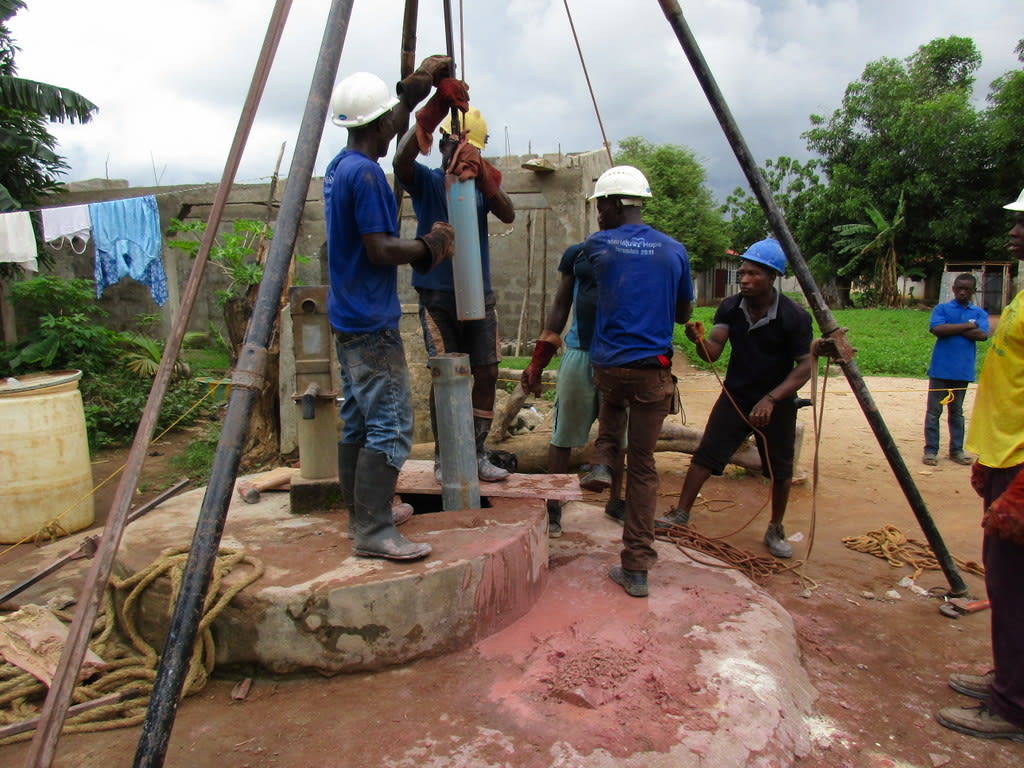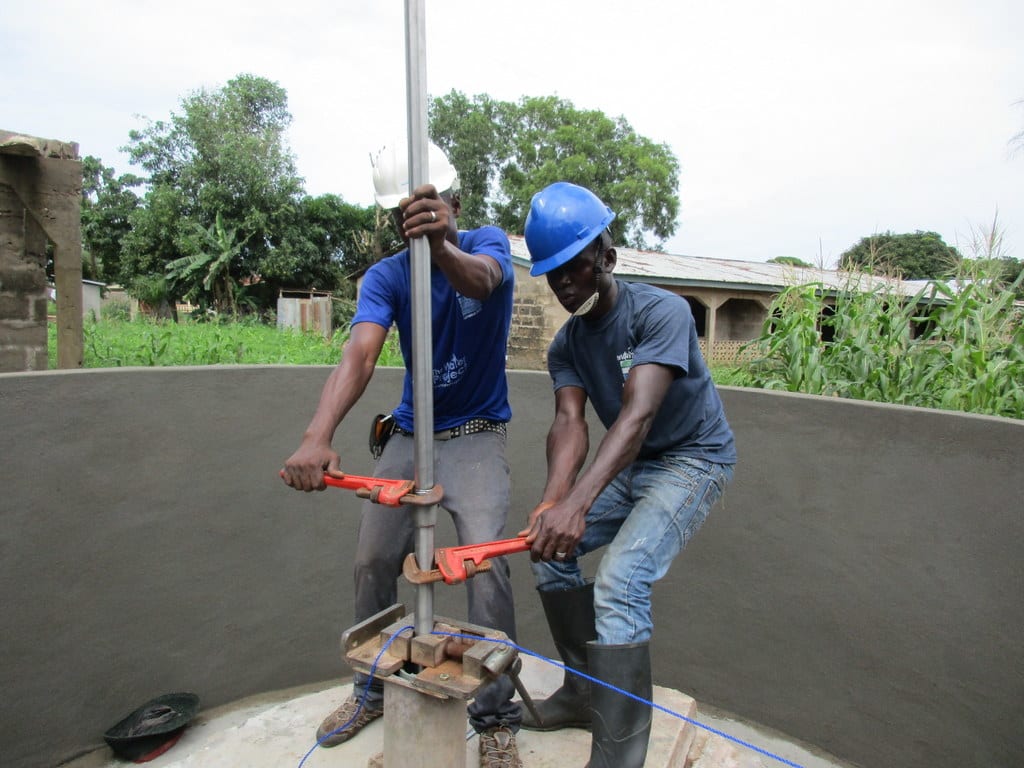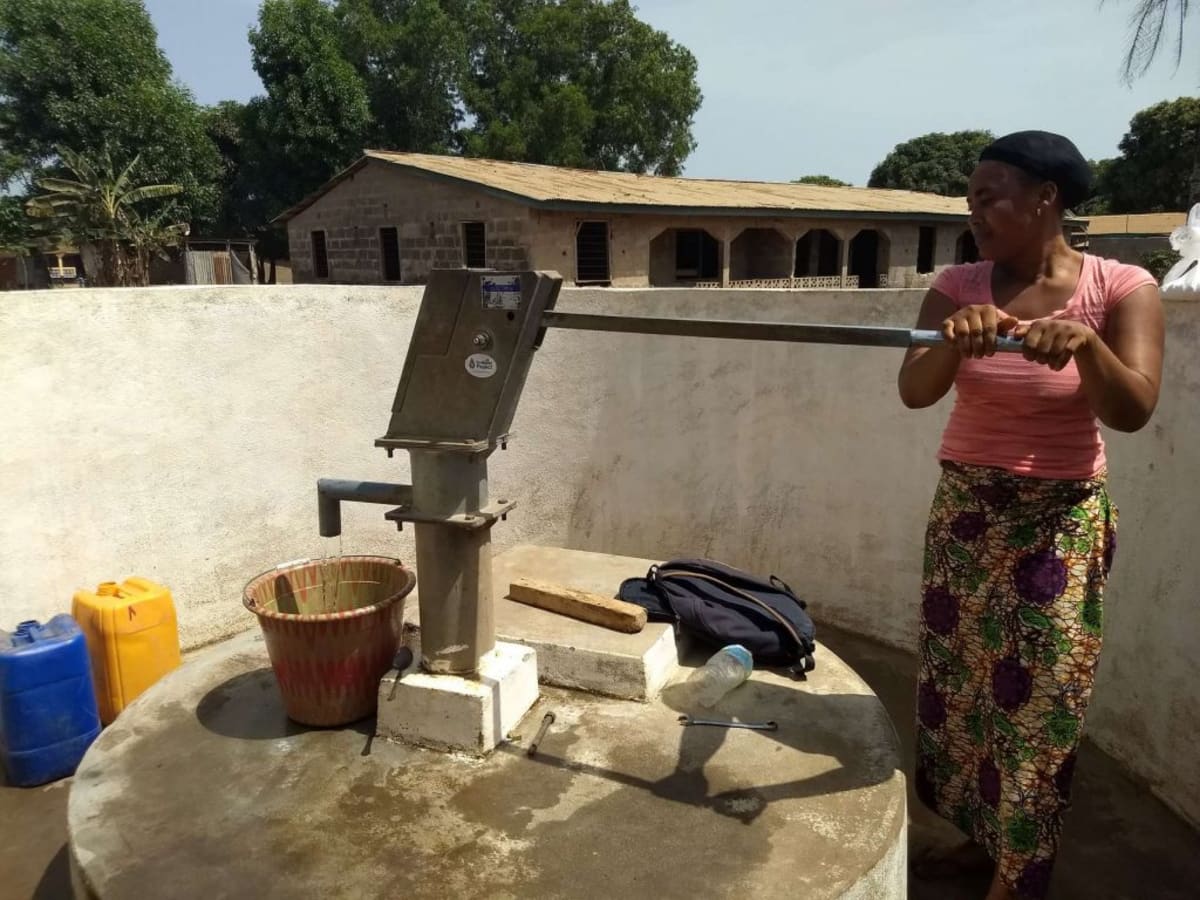This project is a part of our shared program with Mariatu’s Hope of Sierra Leone. Our team is pleased to directly share the below report (edited for clarity, as needed).
Welcome to the Community
This area of Benke Community was established by Reverend Father Albert in 2002. The dry well that this project will repair sits on Kelleh Compound. The compound was built by the Catholic Church for Mr. Kelleh Mansaray. Mr. Mansaray was the artist for the church, and he was given this house and land as compensation. Years later, all of his children make a living doing the same kind of work their father did. Here, t-shirts are printed on by hand, which brings in relatively good money. The children get up early in the morning to scout for their next client. Sometimes, people even come from other chiefdoms to seek their expert hands. The old father can now only look up to his children; his legs are tired and the light shining from his eyes is no longer bright.
Many other members of the surrounding Benke Community have not learned a trade. They have to settle for handouts or go to the market to swap fruits and vegetables. They get up early in the morning to wait for anyone who can give them some money or food. With so much fertile land in Sierra Leone, only a few hard workers make use of it.
Water Situation
The well marked for this rehabilitation project sits in front of the old man's house. The community comes in and out of Kelleh Compound to get their water.
But according to our quarterly monitoring visits, the well only works for part of the year. During the driest months, which begin in March or April and can stretch into August, there's no water in the well. Over the years, this well has become highly dependent on the rain. The well caretaker locks the pump and only allows the surrounding community members to use it for a few hours a day. This allows the well's water to recharge and continue to work throughout any given week. But the situation in the end of May, June, and July is critical; there is no clean water available in this area of Benke, and locals have to rely on swamp water.
There is also a school that neighbors Kelleh Compound, and they don't have their own water source. The students suffer the most when this well goes down, walking long distances to fetch drinking water.
The swamp's water is mixed with clay. Skin is discolored after drinking, which is a sure sign that there are parasites in the water. Children and the elderly suffer most from diarrhea, bloated stomachs, and runny noses. Cases of typhoid are reported, and malaria rates rise as the community resorts to the swamp during the dry months.
Sanitation Situation
The typical latrines in Sierra Leone are made of plastic bags wrapped around some sticks with palm leaves put on top as a roof. The door is a piece of cloth tied at the entrance. The pit is dug no more than twenty feet, and an opening no more than six inches is left at the top. The old folks who are not able to squat use a portable container as a latrine, and its waste is later thrown down the latrine. A handful of households still don't have their own pit latrine, choosing to share with their neighbors.
Less than a quarter of households have a designated private place for bathing. Less than half have helpful tools like dish racks and clotheslines for drying their belongings safely off the ground. In a large community such as this, garbage is thrown in a pile. When it gets unbearably high, garbage is burnt. But in the meantime, garbage is blown around by the wind and dug through by dogs and other scavengers.
There are absolutely no hand-washing stations in this area. John Bainey is a teacher who lives in this community. He said, "The community is littered with trash, children running around with no shoes or clothes on their backs. Children are infested with worms due to exposure to the bare ground. The children are left running barefooted, stepping on dog poop, chickens and other domesticated animals. People and animals sleep under the same roof, the smell coming from sheep, goats and the smell of urine takes up the whole house. The long exposure to bad smells causes lung damage to the children. There are children afflicted with asthma and other breathing conditions that if left untreated will lead to their death."
Plans: Hygiene and Sanitation Training
There will be hygiene and sanitation training sessions offered for three days in a row.
No hand-washing stations were observed here. After our visit, the hygiene and sanitation trainer decided it would be best to teach community members how to build a tippy tap (a hand-washing station built with a jerrycan, string, and sticks). They will use these tippy taps for hand-washing demonstrations, and will also teach about other tools like dish racks and the importance of properly penning in animals.
These trainings will also strengthen the water user committee that manages and maintains this well. They enforce proper behavior and report to us whenever they need our help solving a serious problem, like a pump breakdown.
Plans: Well Rehabilitation
The well marked for this overhaul is dry for four months every year and needs major work to supply adequate, clean water to the community year round. The pump will be removed, and a man will be lowered inside with a hand auger. This hand auger will allow the team to drill several meters deeper to hit a sufficient water column that will ensure the well supplies water throughout all seasons. As the team drills, casing will be installed, transforming this hand-dug well into a pseudo-borehole. PVC piping will connect this lower system directly to the pump, a construction that we know will also improve the quality of water.
Once this plan is implemented, everyone within the community will have access to safe drinking water in both quality and quantity, even through the dry months. The community is so excited to have this project as this season begins!

 Protected Dug Well
Protected Dug Well

































